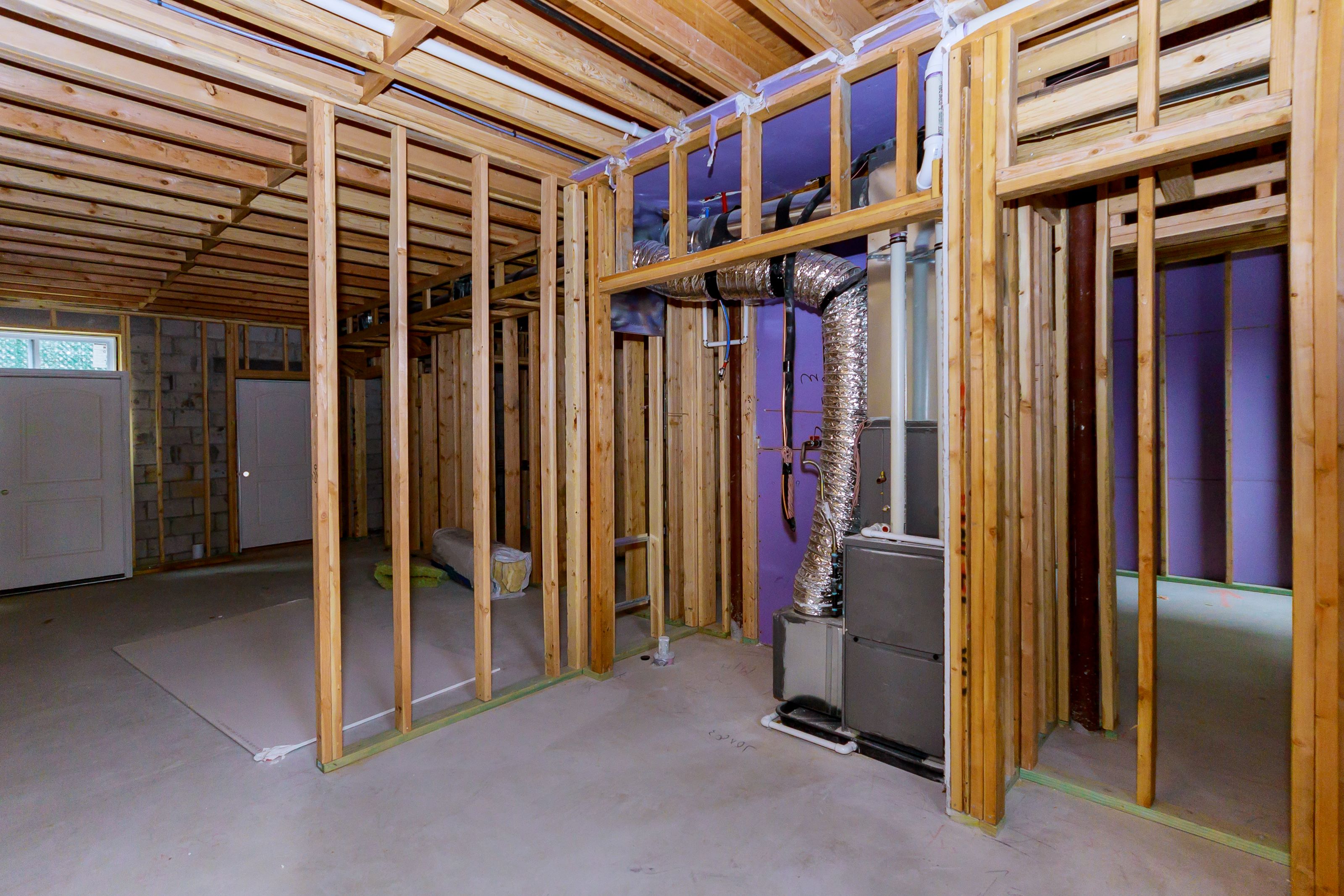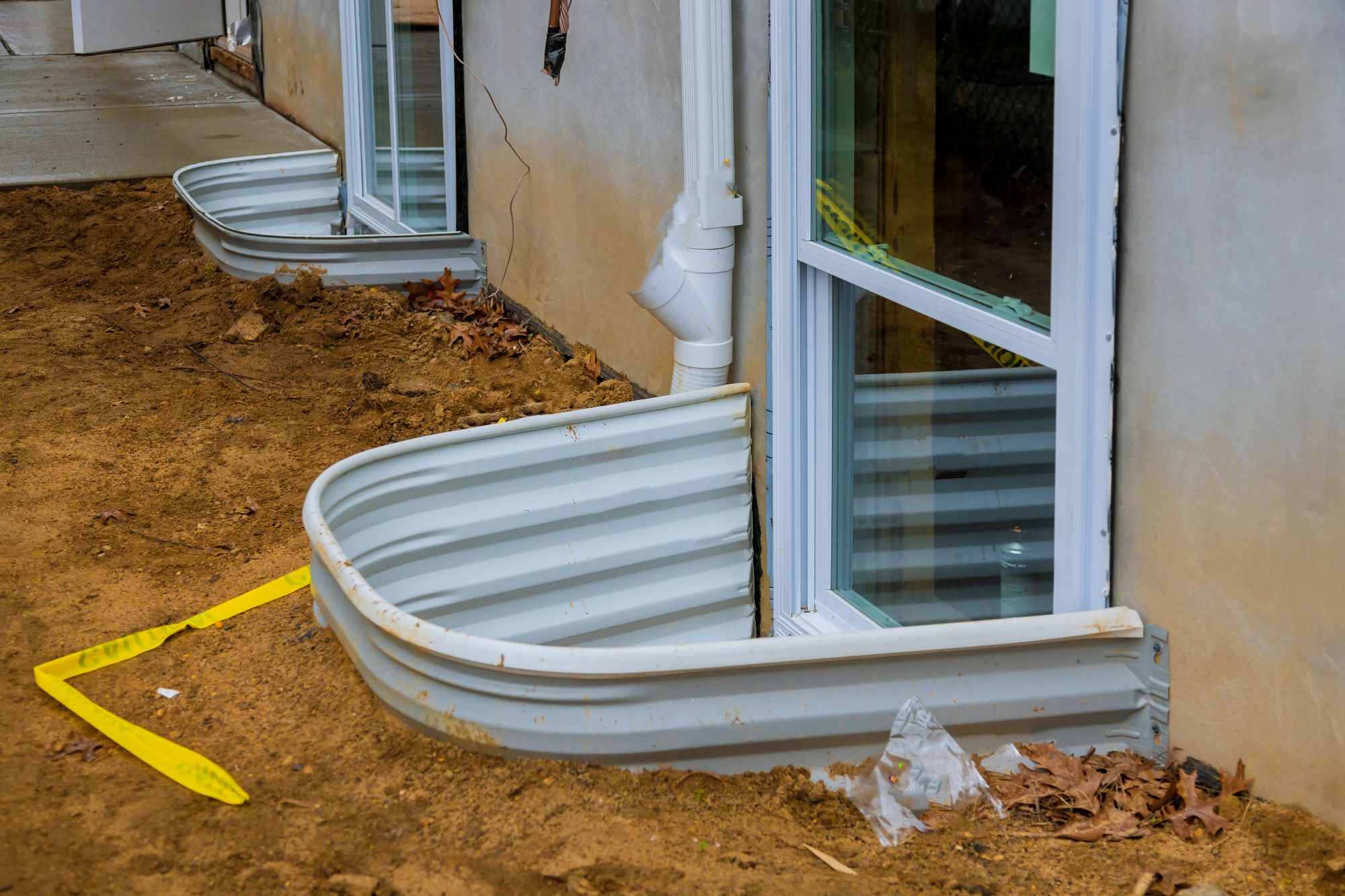Basement ventilation: How to turn your downstairs space into a useable room
Without appropriate ventilation, a basement can be a dark space smelling of mould and damp. But with careful planning, the area can be transformed into a useable part of your home

With proper basement ventilation even the dankest of basements can be brought into use if householders follow some simple expedients.
While basements are the Cinderella of the house – undervalued and sometimes ignored – they’re very often worth converting. Depending on their floor-to-ceiling heights, they have the potential to be bedrooms, bathrooms and even kitchen-diners, while others convert them into specialist spaces: media rooms, gyms or the teenage hangouts we often see in TV shows.
Basement conversions are ultimately about changing subterranean space and all their associated issues into habitable rooms and adding some usable square footage to your home.
Yet, precisely because of their location, basements can suffer from damp. This can come from various sources:
- from the earth upwards in penetrating damp
- from rainfall that gains ingress
- from leaking pipes and seepage through door or window frames, and
- from condensation caused by everyday household activities like cooking
This can create mustiness and damp patches that can lead to mould, which is potentially dangerous to health, aggravating allergies, asthma and other respiratory diseases, and in the worst cases can even be fatal.
Because basements are in part or fully below ground, moisture from the ground can seep in and when cold moisture meets warmer air, condensation develops.
In some areas it’s also worth considering ventilation on the grounds of radon – an invisible toxic gas released from the decomposition of radioactive material in soil and rocks. This is a specialist area with regional differences, so tread cautiously and take sound advice. You can read more on radon on the UK Radon Association website.
Do you need basement ventilation?
First use your senses – damp is relatively easy to detect and there are some easy signs of it in your basement space.
“The presence of damp in a basement is usually detectable by a musty smell, visible mould growth, or by the appearance of water on retaining walls or floors,” says Chris Michael, managing director of leading British air treatment specialist Meaco.
Unchecked, that mustiness could start to be detected above basement level, too. So basement ventilation will be good for the health of the whole house, not to mention its inhabitants.
A regular influx of fresh air, known as natural ventilation or passive ventilation, in to the basement will stop or at least curtail the growth of mould and mildew. This is good advice for anyone seeking to either retrofit an existing basement and for those seeking to dig down and create a new basement.
Even if you’re only using your basement for storage, it’s important to stop damp. “Never have any furniture, clothes or storage boxes touching an outside wall and always leave a gap of a few centimetres. This should stop mould from growing on them," adds Chris.
If you go ahead, bear in mind that you may need planning permission – for which you should take a look at our how to convert a basement and basement design guide. You may also need Party Wall Agreements if your property abuts another. Most importantly, you will have to pass Buildings Regulations.
Are there building regs for basement ventilation?
Yes, the building regulations Approved Document F: Volume 1 (Dwellings) demands that in domestic properties, sufficient ventilation should circulate through the building efficiently and quietly. This could be the presence of windows with vents, added using window wells in a basement, or four other types of ventilation as discussed below.
Either way, adequate ventilation must be part of all basement plans whether the basement be new or retrofitted, heated or unheated – so even if it’s just an occasional space, ventilation should be a priority. The ideal indoor humidity level is 55%RH and you can see our guide on how to reduce humidity if this is a specific problem for your project.

What is the best way to ventilate a basement?
If you have windows or even an exterior doorway in your basement, this is a great way to add natural ventilation to your basement as well as bringing plenty of natural light into the space. Ideally your windows should have trickle vents to allow fresh air to pass in and stale, moist air out.
If there is no option to add windows to your basement space, not even by building window wells, there are four main ways you can add sufficient basement ventilation. These are:
- Extractor fans with background vents. Extract ventilation should be used within an area of increased humidity, for instance, extractor fans over ovens and inside bathrooms. There are minimum extract ventilation rates for different room and these can be seen in our guide to building regulations: Part F. It's also worth having a look at our guides for best bathroom extractor fans and best kitchen extractor fans if installing one in your basement.
- Mechanical Extract Ventilation (MEV). This is a ducting system to draw moisture-laden air up and out, to control humidity. Fresh air meanwhile enters via trickle vents and air bricks in the building's fabric.
- Mechanical Extract Ventilation with Heat Recovery (MVHR). This extracts stale, moist air and brings fresh, filtered air back in via a heat exchanger. By passing both through a heat exchanger it also extracts the heat from the air so it is not lost into the atmosphere.
- Passive Stack Ventilation. While the guidance for this has been removed from the Part F: Volume 1, it can still be used where possible. Passive stack ventilation is a non-mechanical approach using convection to move warm, moist air out of a building at high level and wind pressure - negative on the leewards side of the building and positive on the windward side. This pressure creates air flow, pushing from one side and pulling from the other. It is usually added through ducting and vents.
A dehumidifier can also be a handy addition to a basement, costing in the region of £150-£300. They may be able to solve dampness on their own - and it is genuinely astonishing to see how they conjure litres of water from a room.
“They give drier air and a much better living environment,” says Chris. “A dehumidifier will also support the work of an extractor fan.”
If the basement is unheated, Chris adds, then the temperature will be much closer to 14°C or colder in winter. “In this case use a large compressor dehumidifier [one with a capacity of 20l or 25l. Smaller dehumidifiers [10l and 12l] models might well be cheaper but are not much use at these colder temperatures.”
A good example of a large compressor dehumidifer is this one from Meaco has a 25 litre capacity and is £299.99 on John Lewis.
So choose the size and type of dehumidifier that’s best for your basement space and set the relative humidity target so that the dehumidifier does all the work.
If the basement’s temperature is less than 10°C then a desiccant dehumidifier would be more suitable which has an internal heater adding warmth to a space. They can often used as an alternative to installing radiators. As Chris says, the Meaco DD8L Zambezi has two settings at 330 watts and 650 watts and will fulfil the twin function of heating and dehumidifying your basement.
Get the Homebuilding & Renovating Newsletter
Bring your dream home to life with expert advice, how to guides and design inspiration. Sign up for our newsletter and get two free tickets to a Homebuilding & Renovating Show near you.
Journalist Oliver Bennett has renovated two houses and would like to take on just one more project. He has written for many homes magazines including Grand Designs, Sunday Times Home, Homes and Gardens, the Times Saturday Magazine's interiors section and several more.

